Visitors to Matera in recent years can’t help but have noticed the oversized Dalí sculptures strategically placed throughout the historic center. The contrast between the artist’s provocative surrealism and the old-world setting, extraordinary in itself, cries out for attention in a very contemporary way. Look at me! Take a selfie! Who would have expected to see Salvador Dalí in Matera?
MODERN ART IN THE “SASSI” CITY
Matera is no stranger to reinventing itself, which I wrote about in my book Basilicata: Authentic Italy and more briefly in my blogpost The Transformation of Matera. This city, world renowned for its ancient dwellings carved from stone, has a penchant for placing art from our times in the Sassi’s unique spaces, such as MUSMA Museo della Scultura Contemporanea, a contemporary sculpture museum laid out in a network of grottos and the former noble residence from which they branch.
The city also boasts a “classic” style art museum with the Museo Nazionale d’Arte Medievale e Moderna della Basilicata, housed in the beautiful 17th-century Palazzo Lanfranchi, the sort of genteel space in which we are used to viewing art in Europe.
But what to do with all those caves? And former cave churches with a handful of faded frescos on the walls? Somehow, an anonymous trinket shop wouldn’t seem appropriate…
CITY PLANNING: SALVADOR DALÍ IN MATERA
The local movers and shakers think in rather grand terms for a city of about 60,000. Afterall, Matera didn’t stumble onto its UNESCO World Heritage Site designation, its European Capital of Culture honors or its status as a premier film location by chance. There is a good bit of promotion involved and late in 2018, The Persistence of Opposites opened with over 150 Dalís, including several large-scale open-air sculptures and many more inside the Sassi caves.
Salavador Dalí in Matera was organized by Dalí Universe, a company with one of the largest private collections of the artist’s works in the world. The exhibition presents objects in bronze, glass, gold, as well as collages, graphic pieces and displays with multimedia components. By the way, Dalí was a Spanish artist who lived from 1904 to 1989.
THE MADONNA DELLE VIRTÙ CHURCH
The former Madonna delle Virtù and San Nicola dei Greci churches in Sasso Barisano provide the backdrop for the “event.” Personally, as much as I like Dalí, I must admit that I am more interested in the location than the hype about the “truly special occasion…. [that] will allow visitors to delve into the labyrinth-like mind of the Master and to admire the creative results of his infinite imagination.” In Matera’s case, such art exhibits also allow visitors to delve into the Sassi’s labyrinth-like architecture and ponder as to the infinite imagination of the creators of this incredible excavated space.
Interestingly, the Madonna delle Virtù complex was the setting for the Sassi’s first art display back in 1978 by La Scaletta, the local cultural association that has been at the forefront of conservation and enhancement of Matera’s historical, artistic and environmental heritage. The ancient caves are certainly an evocative venue. The Madonna delle Virtù church is thought to have been carved out in the 12th century. After its abandonment, the three-nave Romanesque-style structure ended up as an unauthorized landfill before its more recent rediscovery.
This particular Dalí sculpture is a bit dwarfed at the back of the church; however, note the ceiling detail. The church architects sculpted an imitation matroneum overhead, a viewing gallery for women.
FORMER MONASTERY
A passageway leads from the Madonna delle Virtù Church to the monastery, an area which began as a crypt and over subsequent centuries was enlarged to house a religious community, often hosting Palestinian nuns. For film buffs, Mel Gibson selected this location for the Last Supper and the feet washing scenes in The Passion of the Christ.
Today, the larger room features Dalí’s “Space Elephant” and “Topographical Metamorphosis of Venus de Milo,” the eternal woman with her drawers fully open, secrets revealed, proud with nothing to hide.
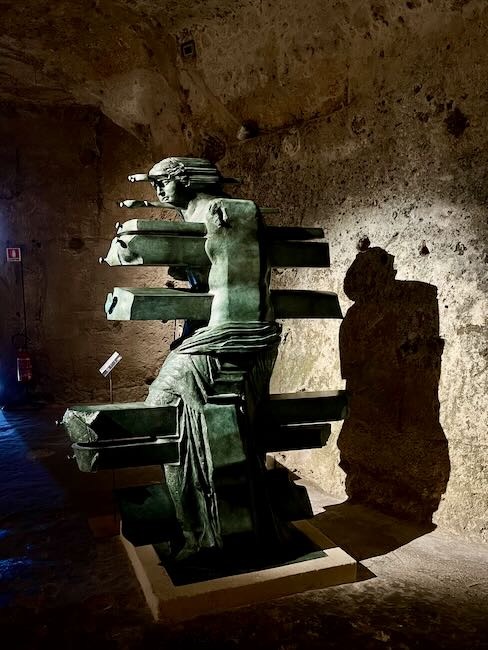
Dalí’s Topographical Metamorphosis of Venus de Milo, bronze sculpture, conceived in 1964, first cast in 1968 using the lost wax method
“Woman Aflame” is displayed in her own room amidst a three-dimensional video projection of swirling objects. The sculpture unites Dalí’s obsessions of fire and the female figure; she also has drawers, hidden secrets. Contrary to the title of the piece, the installation didn’t give me the impression of someone engulfed in flames, rather an elegant woman, face covered, surrounded by a whirling school of pinkish fish-flowers. Her unconscious desire is apparently rather pleasant.
The monastery was abandoned in the late 18th century and peasant farmers turned the space into living quarters and eventually used it for production and storage. There is still a palmento or area for making wine, where the grapes would have been crushed by feet and collected in an adjacent vat. The winepress area is on the right in the following photo with the bronze sculptures of “Adam and Eve” on the left and “Triumphant Angel” seen through the opening to the back room.
SAN NICOLA DEI GRECI CHURCH
Salvador Dalí in Matera continues up steps to a higher level and San Nicola dei Greci, a church in the Greek Orthodox style dating from the 10th century. Interestingly, a 1977 archeological dig uncovered ceramics from the 8th century BC. During the Middle Ages, the church was used as a burial site, clearly seen by the two graves at the front of the nave. A Dalí sculpture sits just behind. In this work, the long-necked “Vénus à la Girafe” exposes her single drawer, which protrudes so far out of her stomach that it needs to be propped up at its end.
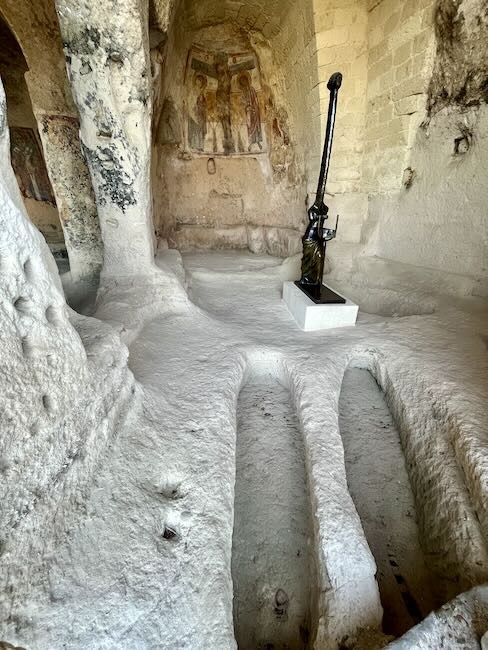
Dalí’s Vénus à la Girafe, conceived and first cast in 1973, exhibited in San Nicola dei Greci Church
At the back of the church, there is a 14th-century fresco of the crucifixion with Mary and John the Evangelist in the Byzantine style.
In the apse to the left, there is a triptych of Byzantine frescos, that of the Saints Nicholas, Barbara and Pantaleon dating from about the 12-13th centuries.
LABRYNTH OF SALVADOR DALÍ IN MATERA
Continuing through the maze, up a few ancient stairs, down a few and through doorways carved out many centuries ago, the exhibition is an exploration of the caves as much as of the art.
A documentary film plays in one grotto room and smaller graphic works are displayed throughout others, such as this exuberant lithograph from Dalí’s Les Songes Drolatiques de Pantagruel, in which he connects with the medieval world through the depiction of the mythical giants of writer François Rabelais and the vivid imagery of his contemporary Hieronymus Bosch.
At the end of the exhibition, there is also the opportunity to bring home a Salvador Dalí from Matera. By Italian museum standards, the grotto shop is good sized, full of books and prints in a wide range of prices. The installation in the Sassi was initially programmed for five years. Will it extend beyond? Or will Matera choose another direction for its streets and caves as it strives for that fashionable vibrancy to attract visitors? Until then, the works of Dalí will continue to greet visitors, some more gracefully than others, in the juxtapositioning of old and new, in a bizarre mix that one might just call surreal…
Would you like to visit Matera, its Sassi as well as the Basilicata region? Join me on my Basilicata Cultural tour! More information on my BASILICATA TOUR Page.
Read all about the fascinating Calabrian region in my book Calabria: The Other Italy, described by Publisher’s Weekly as “an intoxicating blend of humor, joy, and reverence for this area in Italy’s deep south,” and explore Calabria’s northern neighbor in my book Basilicata: Authentic Italy, “recommended to readers who appreciate all things Italian” by the Library Journal.
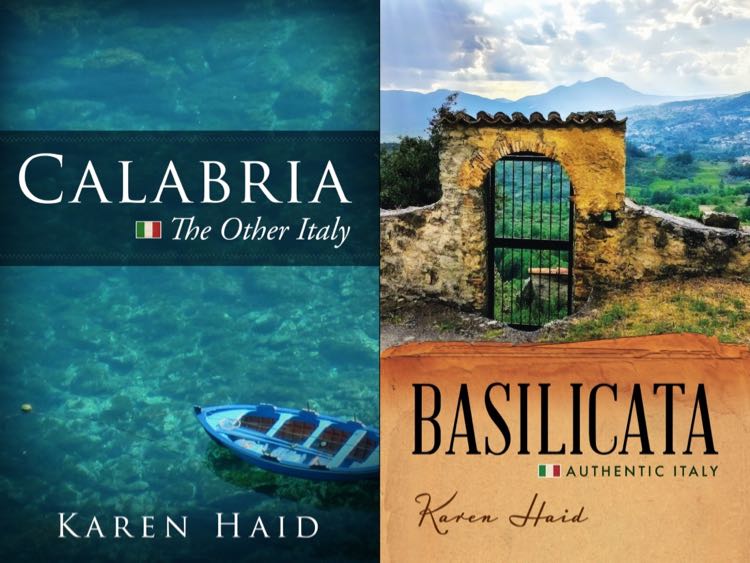 Follow me on social media: Basilicata Facebook page, Calabria: The Other Italy’s Facebook page, Karen’s Instagram and Karen’s Twitter for beautiful pictures and information.
Follow me on social media: Basilicata Facebook page, Calabria: The Other Italy’s Facebook page, Karen’s Instagram and Karen’s Twitter for beautiful pictures and information.
Sign up below to receive the next blog post directly to your email for free.





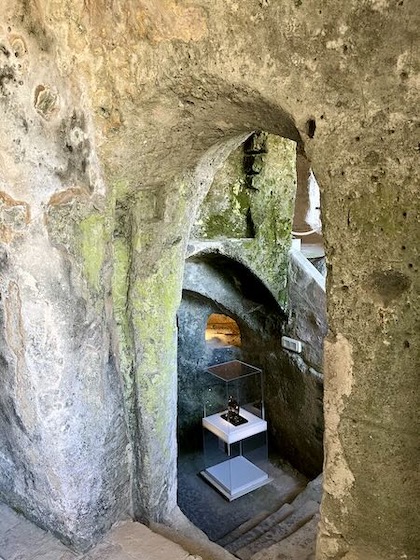

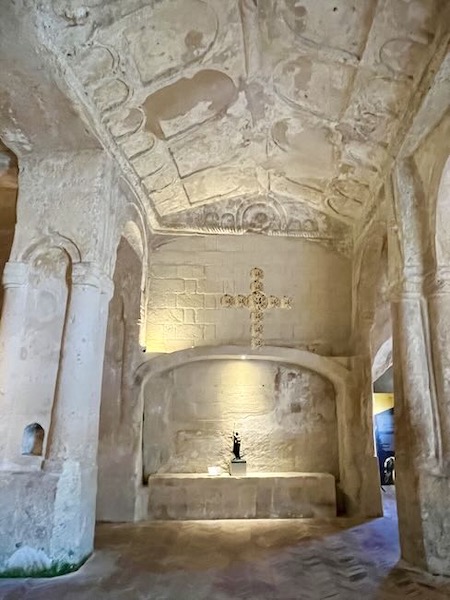


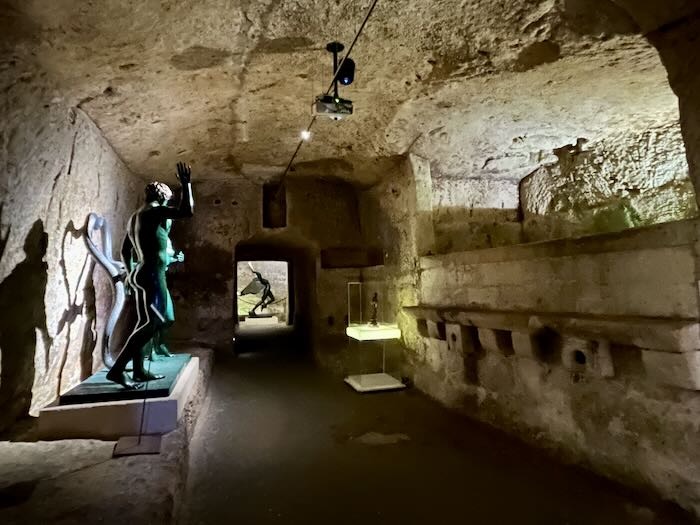





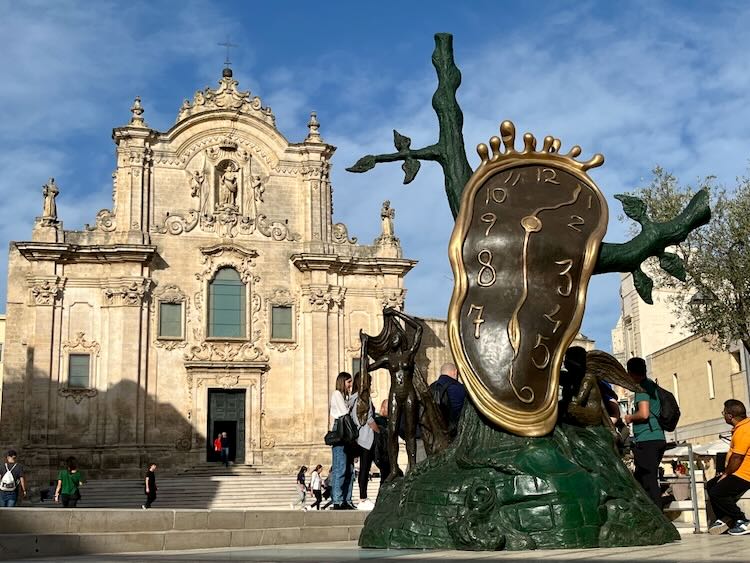
Comments 4
Wow! Looks amazing. We had a few Dali’s on display in Vancouver last year, but the backdrop did NOT compare! Ciao, Cristina
Author
I spent a few days on a vacation in Vancouver a number of years ago and it was pretty special. Matera does give a different twist, though!
At this moment, there are no statues of Dali present in Matera
Author
It was an exhibition that lasted for several years and has ended.